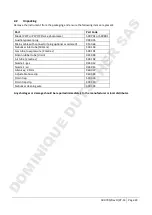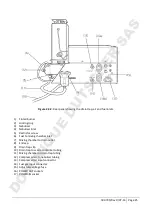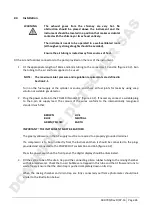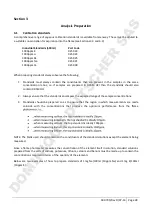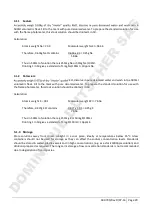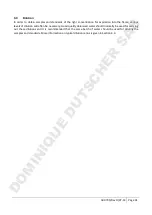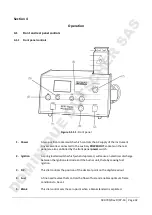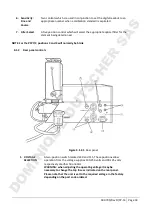
500 795/Rev D/07-14
Page 36
4.3
Calibration: PFP7
It is important to understand that the principles of flame photometry are such that, over
certain
concentration ranges
, light emitted from the flame is
directly
proportional to the concentration of the
species being aspirated.
The graph below shows that the direct relationship between the flame emission and concentration is only
true at relatively low concentrations. Above these low levels the flame begins to saturate and the flame
emission ceases to increase in a linear relationship to concentration.
Figure 4.3.1
: Relationship between sample concentration and flame emission.
If the samples being analysed lie on the linear part of the curve then the user can take direct concentration
readings from the digital display. If, however, the concentration of samples are above the levels shown on
the graph then the user has to dilute the samples so that they lie on the linear part of the curve.
The user can manually construct a calibration curve using standard solutions containing known
concentrations of the elements to be determined and if necessary, other materials to ensure that the
standard and sample backgrounds match. The concentration range covered by the calibration curve will
depend upon the expected concentration of the samples so that the sample readings fall somewhere in the
middle of the calibration curve.
Once the calibration curve has been plotted, the readings for the sample solutions are compared with the
curve to allow the sample concentrations to be established.
It is important to realise that each element has its own characteristic curve and separate calibration curves
must be constructed.
Instrument re-calibration is easily achieved by setting the blank solution to read zero and remeasuring the
top standard. The graph in
Figure 4.3.2
shows a typical curve obtained when measuring in parts per million
(ppm).
0
2
2
4
4
6
6
8
8
10
10
12
ppm
0
2
2
4
4
6
6
8
8
10
10
12
ppm
DOMINIQUE DUTSCHER SAS


